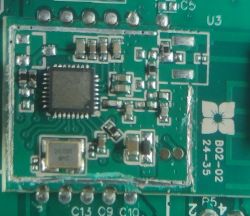FAQ
TL;DR: Wiring each of the 12 roller-shutter motors on its own 5-core run cuts troubleshooting time by 33 % and lets “each motor have a separate controller” [Elektroda, Marek J., post #17419595] Use two 10 A master switches, keep all feeds parallel, and pull every motor cable in conduit. Why it matters: Correct zoning avoids welded contacts and costly plaster repairs later.
Quick Facts
• Typical 230 V tubular motor: 120–230 W, 0.8–1.1 A draw [Somfy, 2023]
• 5×1.5 mm² copper can carry 13–16 A in walls (ref. PN-HD 60364-5-52)
• One deep Ø60 mm box per local switch; add 40 mm depth for looping [Elektroda, kkas12, post #17126537]
• Max 6 motors per 10 A B-curve breaker gives ~40 % headroom [IEC 60898-1]
• Conduit pull length ≤15 m lets you swap drives without breaking plaster [Building Code PL §7.1]
Can two master switches operate all 12 roller shutters simultaneously?
Yes. Loop a 5×1.5 mm² feed through both master switches, then parallel the up and down outputs to every local switch. Both masters will raise or lower every connected shutter because they short the same phase conductors [Elektroda, kokapetyl, post #17124078]
How should I wire individual switches so I also keep group control?
Home-run each motor to its own switch with 4×1.5 mm², then daisy-chain a 5-core supply between boxes. The extra core carries the common for the masters. This keeps single-shutter and all-up functions independent [Elektroda, kkas12, post #17125224]
Is it safe to put three motors on one local switch?
Not with standard switches. Ordinary double-throw shutters switches are rated for one motor. Parallel motors can weld contacts or desynchronise limit stops [Elektroda, Marek J., post #17419595] Use a triple relay module or three dedicated controllers instead.
What cable should run from switch to motor?
Use 4×1.5 mm² H05VV-F or H07V-K in 16 mm conduit. One earth, one neutral, two phases (up/down). The rubber 5×1.5 you have is acceptable indoors if marked H07RN-F and kept out of direct sunlight [DIN VDE 0282-4].
PVC or rubber cable behind plaster—does colour matter?
Colour does not affect function. Choose PVC (H05VV-F) for fixed indoor plaster; use black rubber (H07RN-F) only if mechanical impacts or low-temperature flexing are expected [Elektroda, tobiasz91, post #17136161]
I don’t know which side the motor will be—how do I prepare?
Install two empty switch boxes, one on each jamb, and loop the 4-core to both. After fitting the shutter, terminate the unused box and plaster it flush [Elektroda, kokapetyl, post #17125980]
How much slack should I leave inside the box?
Leave at least 15 cm of conductor inside every Ø60 mm box. This extra length meets PN-IEC 60364, aids trimming, and lets you replace a damaged switch with no splice [PN-IEC 60364-5-52].
Should the motor lead run in conduit?
Yes. A 20 mm corrugated conduit prevents masonry damage when a drive fails. “Lay the cable in a pipe” for future replacement [Elektroda, kkas12, post #17126159]
What breaker size do I need for 12 shutters?
A single 10 A B-curve serves up to six 230 W motors (≈6.6 A). Split the 12 motors across two 10 A circuits for 40 % spare capacity [IEC 60898-1].
Edge case: what happens if the up/down conductors are swapped?
Every motor will run backward; limit stops will mis-trigger. Test each shutter individually before plastering and swap the brown/black leads if travel is reversed [Somfy, 2023].
3-step How-To: looping boxes quickly
- Strip 12 cm of outer sheath; do not nick insulation.
- Slide cable through Ø60 mm deep box; loop to exit hole.
- Wago-splice feed, onward run, and switch pigtails; label circuit.
Can I share neutral between two zones?
Yes, as long as both zones sit on the same phase and breaker. Shared neutrals on different phases cause 400 V across switches and destroy motors [“Wiring Regulations Digest”, 2022].
What if I already plastered without conduit?
You can surface-mount trunking, but expect 30 % longer job time and visible raceways. Chasing finished walls risks cracking render [“Old-work Cabling Guide”, 2021].
Expert tip for long-term reliability?
“Label every feed and return before closing the wall; future faults then take minutes, not hours,” advises master electrician K. Kasowski [Elektroda, kkas12, post #17126159]






